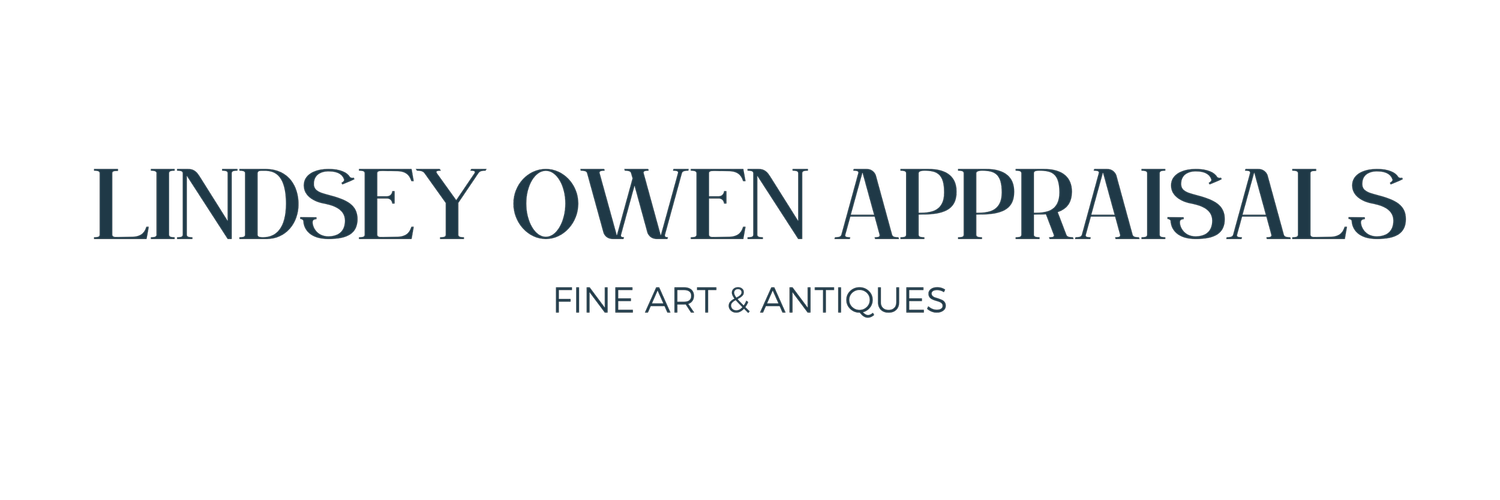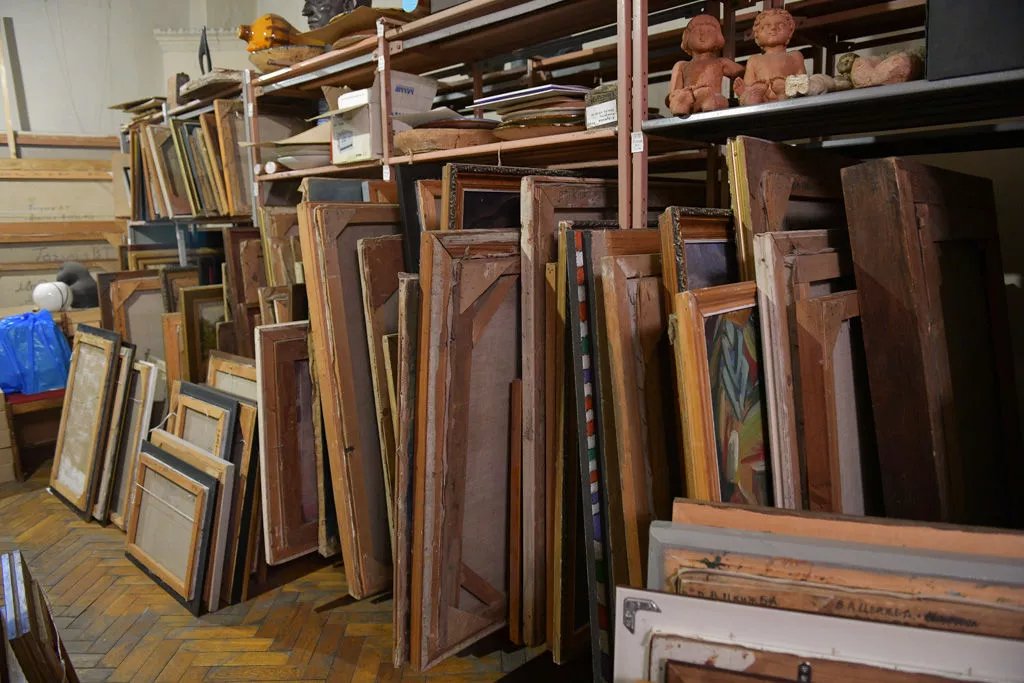How much does it cost to get art appraised?
How much does it cost to get art appraised?
Art appraisal costs depend largely on three factors: the intended use of the appraisal, the type of art being appraised, and the number of pieces being appraised. While some appraisers may charge a flat fee, many appraisers charge an hourly rate. Fine art appraisers typically have advanced degrees, professional certifications, and continuing education requirements— so you should expect that hourly rates are generally in line with other professional service rates in your area, such as CPAs or lawyers. Art appraisers may adjust their hourly rate depending on the scope of the appraisal assignment, but on average you should expect to pay between $150-$500 per hour for a USPAP-compliant art appraisal. The set hourly rates depend on the appraiser’s experience, location, and specializations and an art appraiser's fees should never be based on a percentage of the value of the artwork.
Researching and selecting a qualified and reputable appraiser is important to ensure an accurate and fair evaluation. The member directory of The International Society of Appraisers is an excellent resource for finding a local appraiser. Keep reading to learn more about how much an art appraisal costs.
Investing in Knowledge: Why Art Appraisal Is Worth the Price
As art continues to be a popular investment option, the value of professional art appraisals cannot be overstated. Whether you're a seasoned collector or a novice art enthusiast, understanding the true worth of your artwork is essential for making informed decisions. In this article, we will explore how much an art appraisal costs and why art appraisal is worth the price. In turn, you will learn how qualified art appraisers can help you maximize the potential returns on your investment.
When it comes to art, determining its true value is not as simple as a quick internet search. Professional art appraisers have the expertise and knowledge to accurately assess the quality, provenance, and condition of the artwork, taking into account factors such as the artist's reputation, historical significance, and market demand. Their in-depth analysis provides you with a comprehensive evaluation of your artwork's fair market value or replacement value.
We often receive the question: how much does it cost to get my art valued? I promise you that we are not trying to be evasive, but the answer is: that it depends. Why do you need the appraisal? What type of pieces do you need to be appraised? And how many pieces do you need to be appraised?
How many pieces do you need to be appraised?
Let’s start with the easiest question first. It will take an appraiser longer to inspect two pieces, than one piece. For on-site appraisals, each piece will need to be photographed, and measured, and the condition documented. The more pieces that need to be inspected, the longer it will take. The next stage of the appraisal process is the research stage and the more pieces that need to be appraised, the longer the research and market analysis will take. All other things being equal, if you need four pieces by four different artists appraised, that will likely take longer than if you have four pieces by the same artist.
What type of art do you need to be appraised?
While many people think appraisers have encyclopedic recall of all artists who have ever created in the last 45,500 years of human history and their associated art markets, we don’t. However, we do possess the ability to identify and research artwork within our areas of expertise, and that takes time. Appraisers ask the question “what type of art do you need appraised” to try and understand the level of research that will be required for the appraisal. If the piece is a painting by a well-known artist with well-documented provenance and lots of sales data, then the research process may be straightforward. However, unknown artists, illegible signatures, minimal sales data, dubious provenance, and authentication could indicate there will be significantly more research required to determine an accurate value.
Why do you need the appraisal?
There are reasons people want an art appraisal, and there are reasons people need an art appraisal. If you want an art appraisal because you found an antique painting at a thrift store and suspect it might be a treasure, or you inherited a family heirloom from your great-aunt, then you may be happy with a phone call and a verbal appraisal. Keep in mind, that even for verbal appraisals USPAP-compliant appraisers are required to sign a USPAP certification statement and keep records that are robust enough to produce a written appraisal report.
If you need an appraisal for a legal, insurance, or tax function, the appraisal report requirements are more stringent and take more time to research and prepare. For example, an appraisal for insurance coverage will require more detail on the condition of the piece at the time of inspection than an appraisal which would only be used for personal planning. Appraisals that are used for tax functions (donation, estate tax, etc.) are often some of the most time-consuming reports to prepare. Within these reports, appraisers will include several comparable sales and thorough reasoning to justify the determined value.
Is it worth it to have art appraised?
If you need an appraisal for an insurance, legal, or tax function, then having an appraisal report prepared by a qualified USPAP-compliant appraiser is undeniably worth it. The ramifications of a poorly prepared appraisal report or utilizing an incompetent appraiser can result in litigation, rejection by the IRS, or insufficient insurance coverage. For individuals seeking an appraisal for personal planning purposes, the decision to proceed with an appraisal is entirely personal and typically we refrain from saying it is “worth” getting appraised. Sometimes a piece may have sentimental value and a client wants to utilize our expertise and research skills to uncover more historical information. Priorities vary from person to person, so we always furnish our clients with a written contract for their approval which identifies the scope of the project, the associated costs, and the estimated timeline.
Common misconceptions about art appraisal
One misconception is that art appraisers determine an artwork's value solely based on who the artist is. While an artist's reputation is a significant factor, appraisers consider numerous other aspects, such as condition, provenance, and market trends. A comprehensive appraisal takes into account a variety of factors to provide an accurate evaluation.
Another misconception is that art appraisal is a one-time process. The art market is a volatile market that can shift quickly due to current events or design trends. Therefore the value of art can fluctuate over time due to changes in the market, the artist's reputation, or other external factors. Regularly updating your appraisals, especially insurance appraisals, can help you stay informed about the current value of your artwork and make informed decisions.
Art appraisal vs. art authentication
It is important to differentiate between art appraisal and art authentication. Art appraisal focuses on determining the value of an artwork, taking into account various factors discussed earlier. On the other hand, art authentication involves verifying the authenticity of an artwork and confirming that it is indeed created by the artist it is attributed to. While both processes are related, they serve different purposes.
Art authentication requires specialized knowledge and expertise, often involving research, scientific analysis, and comparison to known works by the artist. This process is typically conducted by experts in the artist's body of work or by institutions specializing in authentication. Art authentication can be a complex and time-consuming process, and it is separate from art appraisal. To complete an appraisal assignment, the appraiser may require formal authentication— particularly in situations where there are known forgeries and fakes within the artist’s body of work. Some appraisers may also offer authentication services, or they may facilitate authentication through third-party specialists.
The value of investing in knowledge through art appraisal
In conclusion, art appraisal is a worthwhile investment for art collectors who require appraisals for legal, tax, or insurance functions. Having an established relationship with a qualified USPAP-compliant art appraiser you trust can ensure that your collection is accurately valued and protect you from costly mistakes. In terms of understanding the cost of your art appraisal, request a written agreement that outlines the scope of the appraisal assignment, the associated fees, additional expenses (such as travel or specialist consults), and the anticipated timeline for the deliverables.


